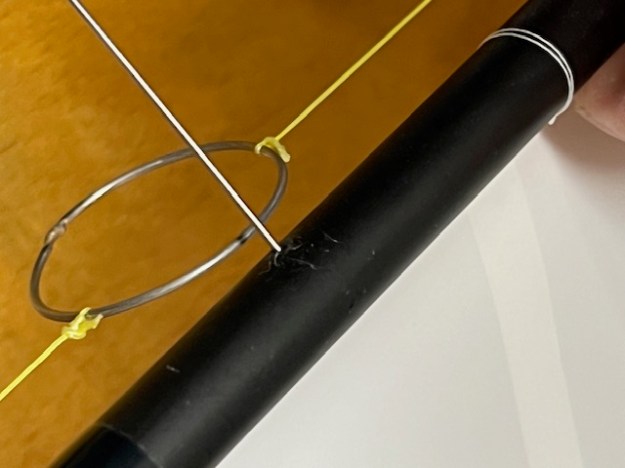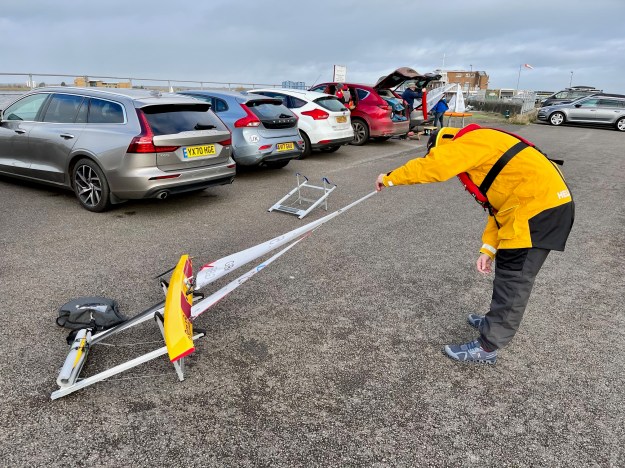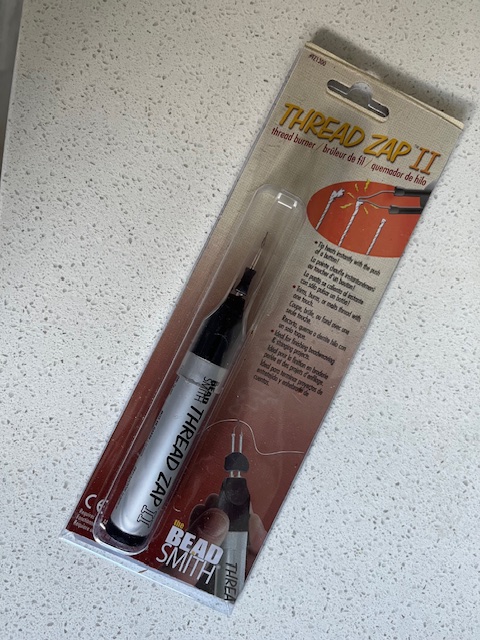Got a swing rig?
You’ll know what I mean by “prodder”. It’s a little bar which is there to help the forestay stand off and clear of the other gubbins at the top of the forward triangle.
If you say, “it cannot come off” or “you cannot lose it” I entirely agree. But when you’re a beginner, all sorts of mad things can…. just happen. Anyway, I’ve no idea how it came off, but it did. Obviously something I did but I just cannot imagine it.

Can you see? A stainless steel tube should locate on that simple hole in the mast. I tried to stuff the prodder back into that hole for a minute or two, but it was obviously the wrong idea.
What do other people do? Well it seems that Sailsetc have some clever little brackets that are ideal when you are building the rig – just slide them over the tube.

Not bad actually. I like fixings I can see and understand. Sailsetc say though that if the rig is already built, you may need to split the fitting and squeeze it over the mast tube. I was less keen on that. Apparently some people also form a cord loop at the end of the prodder and tie it around the mast. I can understand that too.
I instead gave the problem to the clever chaps at K7Yachts. In no time, I could see the answer. A hand made stainless hook, made from 0.6mm wire, that you wiggle into that hole. It need a little kink in the end to grip the inside of the mast tube. The rest of the wire rod sticks out of the hole, and it is cut off at about 2cms length. Then simply slide the prodder over that. Voila!! (see below)




There seems t one a choice of whether the prodder is perpendicular to the mast or the forestay. (I’ve no idea how to work that out!)
Anyway – really impressive fix. Light weight, clean windage etc






